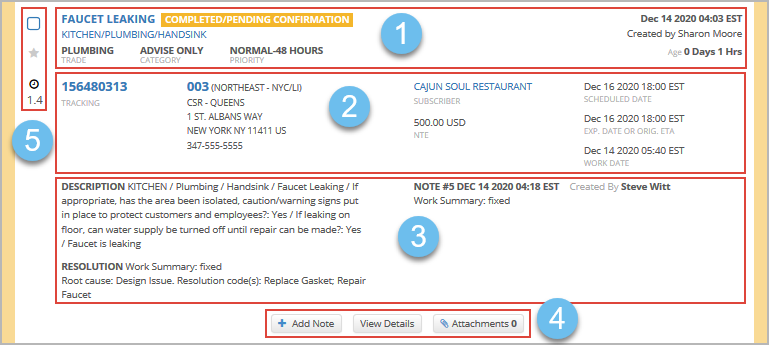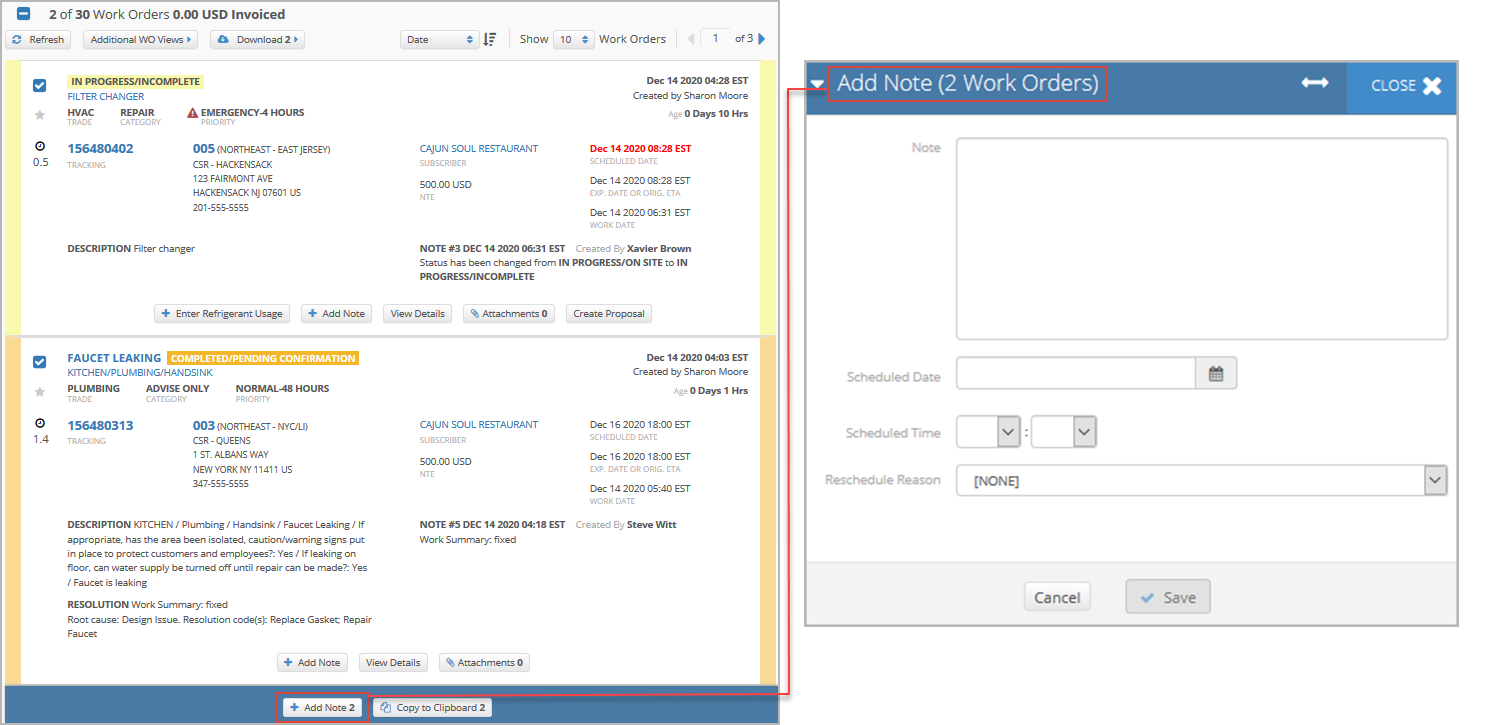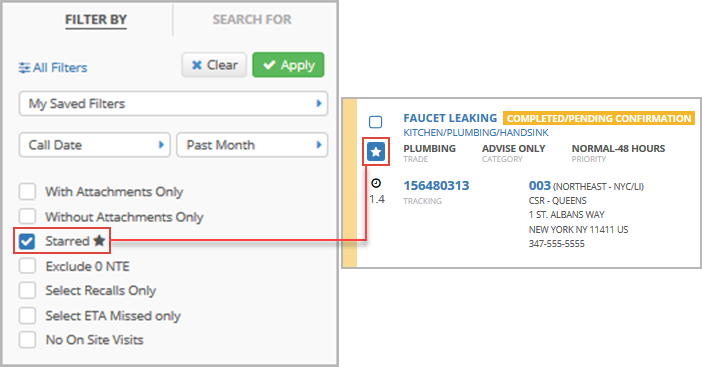When a work order is assigned to your company, it will appear in Provider Automation on the Work Orders List. Understanding the details of a work order can help you manage your work orders effectively.
Let's review how a work order displays on the Work Orders List, divided into the following sections:
- Section 1 (Issues & Status) displays the problem code, status, description, trade, category, priority as well as the date when a work order was created, the caller name, and the work order age.
Section 2 (WO Details) contains the work order tracking number, location details, subscriber, NTE amount as well as scheduled date, expiration date, and work date. If a proposal or invoice also exists for a work order, they appear in this section — right under the NTE amount.
Should you need to change the decimal point (.) to decimal comma (,) on monetary amounts, contact your ServiceChannel representative.
- Section 3 (Notes & Descriptions) shows the problem description, the last added note, and the resolution (for Completed and Invoiced work orders) which may include resolution and root cause codes. If a work order has an associated RFP or asset, they also appear here.
- Section 4 (Work Order Actions) provides options for adding notes and attachments, viewing work order details, and creating proposals and invoices.
- Section 5 (Links and Bulk Actions) depicts icons indicating starred work orders or recalls, the total time spent by a technician on-site, and a checkbox to select this work order for bulk actions or downloads.
Sections of a Work Order
Click and expand each section below to drill down into the information on each work order.









